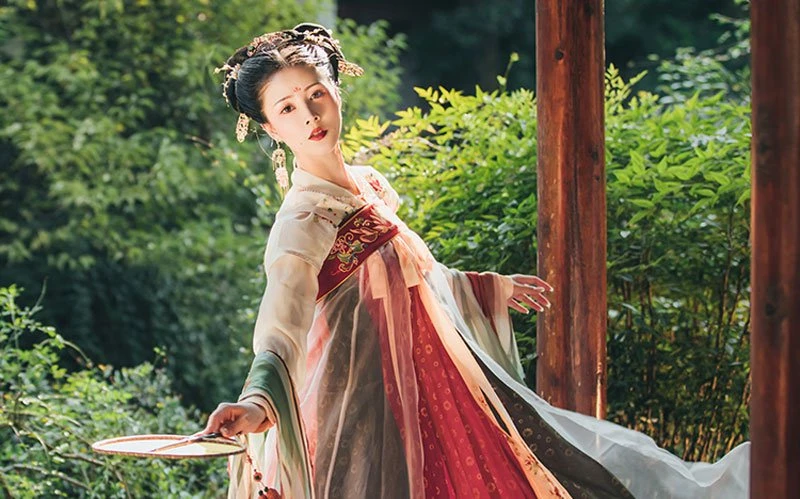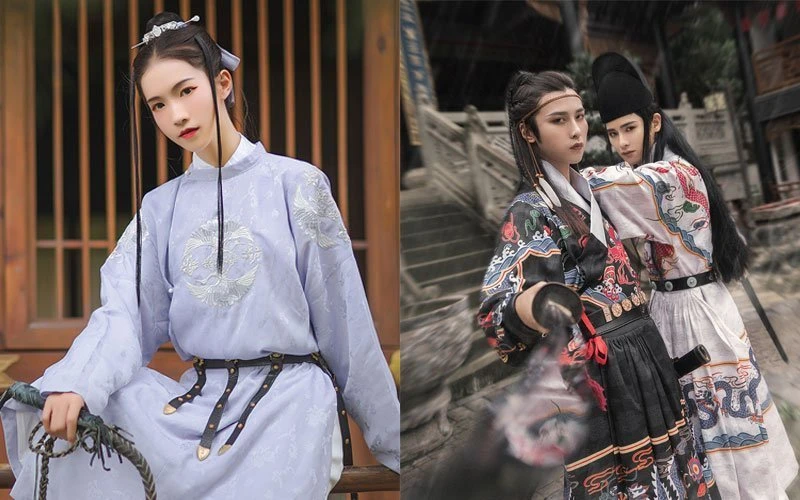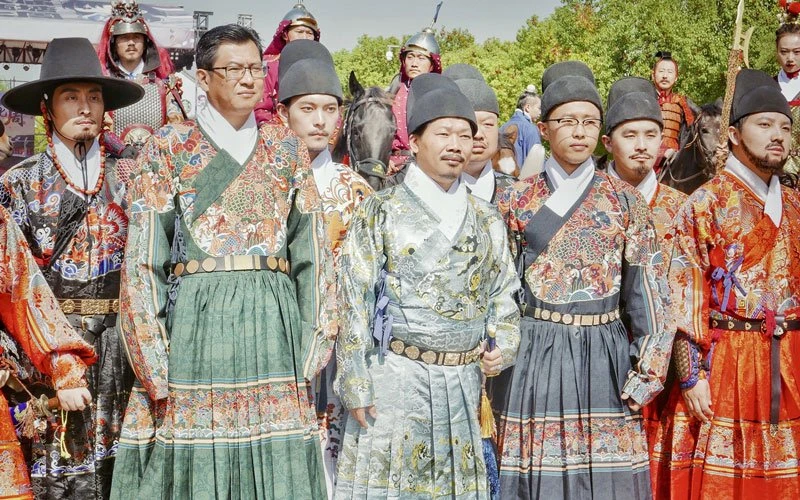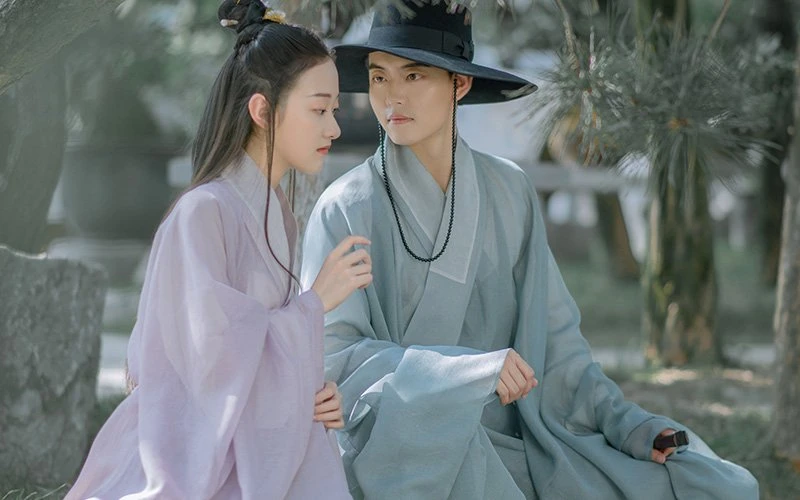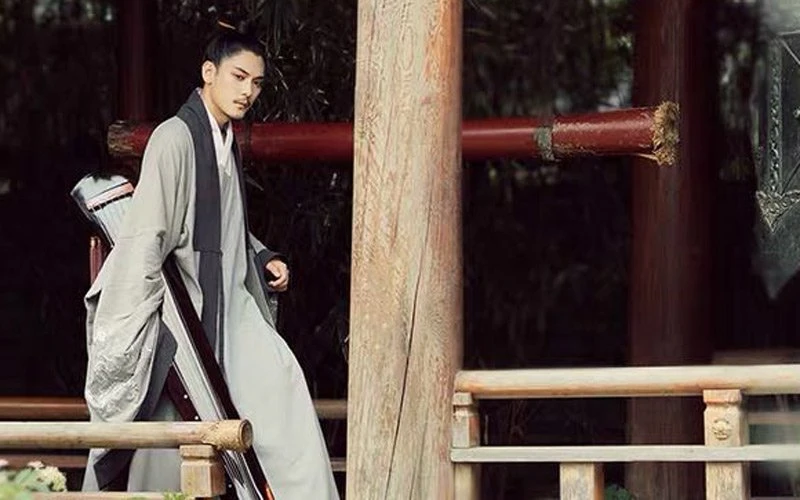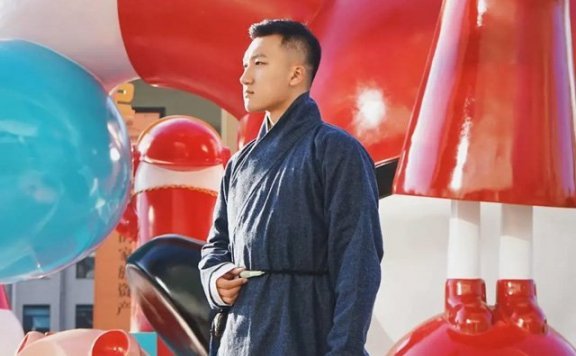-
The 5 Most Popular Styles of Oriental Dress & Clothing - Asian Robe
What is the oriental dress, clothing? Due to the differences in history, culture, and geographical location, the traditional costumes of different countries in the world are not the same. Even in Asia, the oriental dress clothing of different countries is also colorful. On the continent of Asia, each country has its own unique and proud culture. Different states have different characteristics in their clothes, food, residence, and travel. And clothing is one of the things that can best record and show the cultural changes of a country. There are many kinds of traditional asian clothing, including Hanfu, Qipao, Kimono, Hanbok, Sari, Ao Dai, Chut Thai, Tajik clothing, etc. Today, let's learn about some of the most distinctive and representative traditional oriental dress, clothing. 1. Hanfu / Cheongsam China has a long history and its traditional costumes are constantly changing. From the upper and the lower garments system of the Yellow Emperor era, to the crown and uniform system of the Han Dynasty, to the Zhongshan costume of the Republic of China, it is a miniature of China's social environment in different periods. Hanfu: Hanfu is the general designation of "Han traditional costume", also known as Hanyiguan (汉衣冠), Hanzhuang (汉装),…- 9.4k
- 1
-
Hanfu History | The Development of Chinese Robe System
We often see many different Chinese robe styles of Hanfu, but you may not be able to say exactly what the difference is between them. There are many similarities in different styles of Hanfu, but with the development of history, it is gradually optimized, convenient to wear, and also derived from different shapes. This article will introduce the form system of the Hanfu and Chinese robe system. The form system of Hanfu There are many styles of Hanfu, but they can be divided into the following shapes, Yichang system (衣裳制), is the kind with the separation of the upper and the lower garments. Shenyi system (深衣制), is the one-piece kind that unites the upper and the lower garments together, make separately, and sew together. Paofu system (Chinese robe, 袍服制), cut out the upper and the lower garments with a piece of cloth, no seam in the middle, natural integration. The uniform system of Chinese robe (袍服) Chinese robes appeared in the pre-Qin period, at that time, were just underwear with cotton, so people have to wear it with their coats. In the Zhou Dynasty, emperors used robes for daily wear. In the Qin and Han Dynasties, the status of robe…- 10.1k
- 5
-
Ancient Chinese Robes for Men: Tieli & Yisan
We have previously detailed a few ancient Chinese robes from the Ming Dynasty (Zhiduo/Taoist/Zhishen), most of which are suitable for scholars, but today we will introduce you to 2 more martial styles ancient Chinese robes for men: Tieli & Yisan. You may often find these two classic Chinese costumes at Hanfu festivals or events, they are very eye-catching and handsome. Tieli (贴里) [History and characteristics of Tieli] Tieli is usually worn under a round-necked robe and Dahu (褡护, a type of clothing that belongs to the Banbi), which makes the wide hem of the robe slightly outward and dignified. Tieli is the Mongolian word for the robe and is an import from the Yuan Dynasty. After being inherited by the Ming Dynasty, the garment was lengthened, and the overall structure closer to Shenyi system of the Hanfu, and integrated the Han "orthodox" rituals, and later became the most common ancient Chinese robes, and is a common style of the Ming Dynasty officials (up to the Feiyu suit, down to military uniforms). Features of the Tieli include: Jiaolingyouren (交领右衽), the front and back of the garment are cut separates the top and bottom. Sleeves' styles are available in narrow and large,…- 3.7k
- 0
-
Details of Zhishen - Ming Style Hanfu Outerwear
More than a decade ago, when the Hanfu movement was just gaining momentum, the more popular style of Hanfu outerwear was Shuhe (短褐). To this day, Hanfu has entered a shift to sophisticated and fashionable, and all we consider is what kind of shape is sophisticated, how to wear good-looking, and how to realize the two at the same time. As daily casual outerwear, it was clear that Duanhe could no longer meet this demand. In contrast, Zhiduo, Zhishen, round neck gown, and other forms will be more advantageous, today bring you the introduction of style is the Ming style Hanfu outerwear: Zhishen. [The structure and history of Zhishen] Zhishen, also known as Changyi (长衣), Haiqing (海青). Its structural features are very similar to "Taoist robes (道袍)". Ming Dynasty Liu Ruoyu "Zhuozhongzhi (酌中志)" records: "Zhishen, the system is the same as the Taoist robe, but hem swing in outside." Zhishen has several key features: The collar shape is Jiaoling Youren (交领右衽), also called "straight collar" because the collar style is slanting straight; Generally, one pair of laces is attached to the inner lapel and two pairs of laces are attached to the outer lapel to secure the lapel; Large sleeves; Slits…- 2.8k
- 0
-
Daopao - Ming Style Hanfu Taoist Robe
What is the image that comes to your mind when you think of a Taoist robe? Is that a priest's robe? Or a Japanese cardigan? When we talk about traditional Chinese Hanfu, Taoist robes are usually referred to as one of the men's traditional Chinese costumes, also popular among the Ming Dynasty scholar's costumes. If there is any style of men's Hanfu that can be versatile, the robe must be the obvious choice. As you can see from its appearance, it is a very stylish Chinese man costume. Different styles of Taoist robes are suitable for people of all ages and temperaments, and Taoist robes with different clothing accessories will bring a completely different visual experience, which can be said to be the essential clothing for boys who are new to Hanfu. We'll start with a few photos to get a visual of the contemporary traditional Taoist robe. So let's learn more about the Daopao together! [Structure and History of the Taoist Robe] Taoist robe, once popular in the mid to late Ming Dynasty, developed from an earlier garment called "Zhe (褶)"; The collar shape is Jiaoling Youren (交领右衽), most collars will have an extra Huling (护领) sewn into them;…- 5.4k
- 3
-
Details of Zhiduo - Ming Style Hanfu Jacket
If you like Hanfu, you may have seen all kinds of Hanfu jacket, But maybe you can't tell the difference between Zhiduo (直裰), Daopao (道袍), and Zhishen (直身), because they all look almost the same from the outside, but in fact, there are a lot of differences in the details, so let's get to know the "Zhiduo" today! [Structure and History of the Hanfu Jacket: Zhiduo] Zhiduo (直裰, also be called 直掇), has several key features: The collar shape is Jiaoling Youren (交领右衽, mean: crossed collars, tying to the right), Can be sewn a Huling (护领, sewn-on the collar area, mostly white and varying in width, to protect the collar from wear and tear and stains. In ancient times, the Huling was easy to dismantle and often replaced. Most of the Huling in contemporary Hanfu costume is preserved as a traditional feature.) on the collar. The making method of Zhiduo: Tongcai (通裁, cut in one piece, no seams on top and bottom). Usually narrow sleeves, but also straight or pipa sleeves. It is knee-length, and the length of the garment and the width of the sleeves vary according to the wearer's needs. The body of the garment is slit…- 4.1k
- 0
